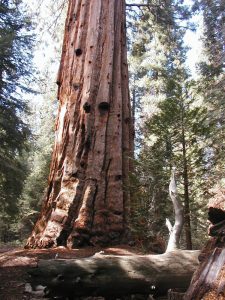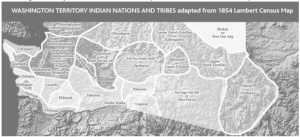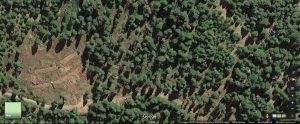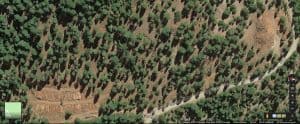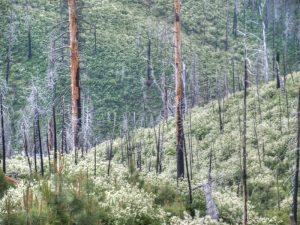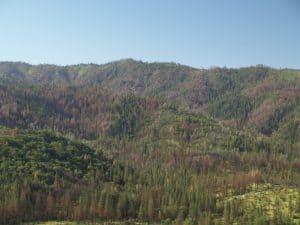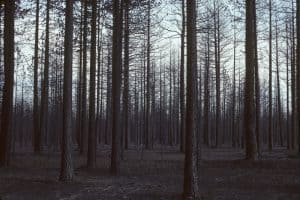I was curious about the claim that “forests can’t sell trees from areas that are not in the timber suitable acres in a forest plan”, as we discussed for this project here. Further exploration yielded the information that the Sierra Club is one of the plaintiffs in the current litigation. Which made me wonder whether they had ever changed their policy with regard to selling trees from National Forest. I looked on their website and it appears that they still have this 1996 policy.
The Sierra Club support[s] protecting all federal publicly owned lands in the United States and advocate[s] an end to all commercial logging on these lands.
Adopted in the Sierra Club Annual Election, April 20, 1996
Now 1996 was 24 years ago, and perhaps some things have changed since then. Especially in California, where the Sierra Club headquarters are located, many folks think that if wood from fuel treatment projects (or salvage) could be sold, it should be, and that would be better, say, for climate than burning it in piles.
I also found this clarification from 2012.
Commercial logging is the removal of trees from federal lands as commodities — whether for lumber (or other building materials), pulp/paper, energy, or other commodity production — regardless of the stated rationale for the logging project, or whether some term other than commercial logging is used to describe the project.
There has been a great deal of pushback in various op-eds that environmental groups’ efforts and lawsuits have nothing to do with ability to get fuel treatments (and prescribed burning, where pre-treatment is necessary) done on federal lands. (My view is that it’s one of many factors).
But in an effort to be logical, for that to be true then:
(1) The Sierra Club has been completely unsuccessful with this policy over 24 years, that is, it has no effect because no fuel treatments would potentially incorporate commercial logging (in this case, they might want to reconsider the policy), or
(2) Number of acres treated for fuels is invariant to whether trees are sold or not. (I think there are two piles of funding one for fuel treatment and one for timber, and if you can do both you can fund a project from either or both pots, but I’m sure it’s more complicated and would like to hear from some TWS experts on this.)
But with what we know today, the alternatives to selling trees from fuel treatments (because many trees can’t be sold, and the FS still does fuel treatment) is to pile and burn them, or chip and mulch or …
It’s an advantage of interest groups, unlike federal agencies, that they can say what shouldn’t be done, without being clear about what they think should be done instead. It’s a great position to be in, because you don’t have to consider how technically realistic the alternatives are, nor do you have to produce a document describing them, and the environmental pros and cons of each. Nor put those out for comment, or debate what the best available science says.
Perhaps it boils down to “you can’t trust those people to be honest about the reasons for cutting trees, and we’re going to assume that all tree cutting that might be sold is really for commercial timber production.” It seems to me, again, that in 24 years, there might be other ways of dealing with these concerns.
When the FS was exploring getting wood certified by FSC, I heard that the FS couldn’t do it because the Sierra Club was against it. I was surprised that one organization could have enough clout to put an end to an idea. I’ve heard this several times, but did not sit in on the meetings myself, so can’t vouch for it. But that idea was for making the case that if people use wood, the NFs can produce it just as sustainably as anyone else. It makes perfect sense that to the Sierra Club ECL means ECL no matter how gentle the practices used.
What I’m thinking about is an independent certification body that could say “we have looked at this and these folks are cutting trees for other reasons. The choices are leaving stacks and burning versus selling them and having people use them (substituting for Canadian imports or ??).” It seems to me a certification body would be cheaper, and better, and with my design incorporate public comment, so more transparent, than going to court and having folks digging through federal employees’ emails for signs of hidden commercial intentions. And at the end of the day the judge may well end up ruling on something completely different, leading to appeals and more court cases and so on.
I think that such a body might also help folks in the Sierra Club who might be puzzled by the complexities of the 2012 memo. If, when I worked for the FS, I had gotten a memo like that, I would have interpreted it “you are free to do what you think is right, unless someone more important than you finds out and disagrees, and then you will have to walk back agreements you made and possibly get in a lot of trouble.” Been there…


